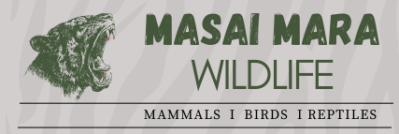- Common Names: Ground Pangolin, Scaly Anteater
- Scientific Name: Smutsia temminckii
- Swahili Name: Kakakuona
- Maasai Name: Entaboi
- Size:
- Head-Body Length (HBT): 111 cm (44 inches)
- Gestation: 19 weeks
- Recognition: The Pangolin has a unique appearance, with its small head, elongated body, and a long tail covered in tough, overlapping, plate-like scales. These scales, made from keratin, are what make the Pangolin one of the most distinctive animals in Africa. When threatened, it rolls into a tight ball, protecting its soft underbelly, and uses its sharp tail scales to fend off predators.
Habits and Behavior
- Primarily Nocturnal: Pangolins are mostly active at night, but on rare occasions, they can be seen during the day, usually curled up in a defensive ball. They are solitary animals, emerging from their burrows in search of food—primarily ants and termites, which they detect with their excellent sense of smell.
- Walking Style: Due to their large, curved front claws (designed for breaking into termite mounds and anthills), Pangolins tend to walk on their hind legs, using their strong tails for balance, while keeping their forelegs raised off the ground. This odd but effective gait is one of the Pangolin’s fascinating traits.
- Foraging: The Pangolin’s primary diet is ants and termites (formicivorous). Its long, sticky tongue—up to 50 cm (16 inches) in length—is a specialized tool for extracting prey from deep inside mounds and tunnels. The tongue is stored in a cheek pouch when not in use, and its sticky coating helps it capture hundreds of insects in a single feeding.
Habitat
- Where to Find: Pangolins are extremely rare in the Masai Mara, and they can potentially be found in various habitats except for marshes and rivers. They prefer dry savanna, scrubland, and areas where termite and ant populations are abundant. However, due to their rarity and secretive nature, they are among the most elusive creatures in the region, making sightings exceedingly special.
Conservation Status
- IUCN Status: Vulnerable. The Ground Pangolin is under severe threat due to poaching for its scales, which are highly valued in traditional medicine and as charms in certain cultures. Illegal wildlife trade has decimated populations across their range. Conservationists are working tirelessly to protect this species, but the demand for their scales continues to pose a major challenge.
- Major Threats: The biggest threat to Pangolins is poaching. Their scales are believed to have medicinal properties and are used in traditional medicines, as well as being sold as love charms. Habitat destruction and loss due to agriculture and human expansion also threaten their survival. Their low reproductive rate further exacerbates the risk to their populations.
Unique Traits
- Armor of Scales: The Pangolin’s entire body (except for its soft underbelly) is covered in tough, keratin-based scales. These scales provide protection from predators, and when threatened, the Pangolin rolls into a defensive ball, exposing only its hard outer shell.
- Specialized Tongue: Its incredibly long tongue, stored in a cheek pouch when not in use, is coated with sticky saliva that helps it extract and consume its prey from deep inside ant and termite mounds.
- Rare and Elusive: The Ground Pangolin is one of the most sought-after animals for experienced safari-goers, thanks to its extreme rarity and nocturnal, secretive habits.
Interesting Facts
- Tail Defense: When harassed by a predator, the Pangolin can thrash its sharp-scaled tail, using the scales as a defensive weapon to deter attackers.
- A Symbol of Luck: In Maasai culture, seeing a Pangolin is considered a sign of good luck. This belief has been passed down through generations, with some even saying it promises a long and enjoyable life.
In conclusion, the Ground Pangolin is one of the most remarkable yet highly endangered creatures in the Masai Mara. Its unique armored appearance, secretive behavior, and fascinating feeding techniques make it a sought-after sighting for wildlife enthusiasts. Conservation efforts are critical to its survival, as it continues to face threats from poaching and habitat loss.
